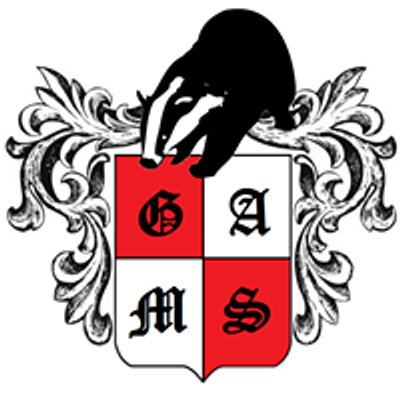Lecture | Devotional Entertainment: Sacred & Secular Interpretations of Illustrated Apocalypse MS
Schedule
Sat Apr 09 2022 at 04:00 pm to 05:30 pm
Location
University of Wisconsin Science Hall | Madison, WI

Advertisement
This lecture will be the closing keynote lecture for the Graduate Association of Medieval Studies (GAMS) 9th Annual Medieval Studies Colloquium. All GAMS Colloquium lectures and conference sessions are free and open to the public.Keynote Lecture
Dr. Karlyn Griffith, Associate Professor, Art History, California Polytechnic State University, Pomona
Title: “Devotional Entertainment: Sacred and Secular Interpretations of Illustrated Apocalypse Manuscripts”
Science Hall, Room 180
Abstract: The Book of Revelation permeated medieval life, and the manuscripts visualizing John’s vibrant account of the End of Days contributed to medieval culture in a myriad of ways beyond an obvious eschatological purpose. Apocalypse imagery appeared across all media in the Middle Ages, but by far illustrated Apocalypse manuscripts were the most common and complete visualizations. After surviving Books of Hours and Psalters, Apocalypses are the most luxurious and numerous, with 174 extant manuscripts containing Apocalypse imagery made between 800 and 1500. Unlike Books of Hours and Psalters, illustrated Apocalypse manuscripts maintained consistent popularity until the era of printed books.
Despite the crucial role of Revelation throughout the Middle Ages and the popularity of illustrated Apocalypses, the past 100 years of scholarship on these books has been almost exclusively limited to mapping iconographic families and offering devotional interpretations. Rather than seeking to explain Apocalypse art in terms of its obvious sacred purpose, biblical exegesis, or erudite theological texts, I look at these manuscripts from a secular—or lay and non-doctrinal—perspective to explore why these books were so popular and the different ways that the Apocalypse could fire the medieval imagination. The aim of this talk is to challenge the prevailing paradigm in medieval art history that privileges sacred interpretations of art to the exclusion of popular culture. I prefer the term “popular” to “secular,” and I see the dichotomy between “sacred” and “secular” in medieval culture more so as between high, monastic, or scholastic versus low, lay, or common. In this talk I explore late medieval illustrated Apocalypses within vernacular literary culture, legend, and court culture, and I argue that some imagery in Apocalypse manuscripts can be linked to these aspects of popular culture. These images performed diverse functions for the Apocalypse reader-viewer, from expressions of identity, entertainment, to addressing practical concerns of personal eschatology.
Dr. Griffith's public lecture and workshop is sponsored by the Program in Medieval Studies, Department of Art History, Department of History, Department of English, Department of French & Italian, and the Department of German, Nordic, and Slavic +. This lecture and workshop is also funded in part by an Associated Students of Madison (ASM) viewpoint neutral grant and the Wisconsin Experience Grant (WEG).
For accessibility accommodations, please contact: [email protected].
Advertisement
Where is it happening?
University of Wisconsin Science Hall, 550 N Park St,Madison,WI,United StatesEvent Location & Nearby Stays:
